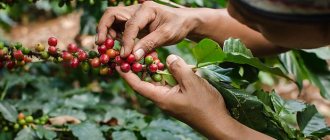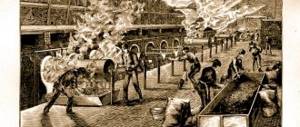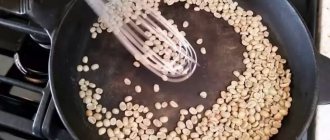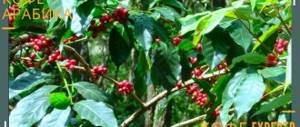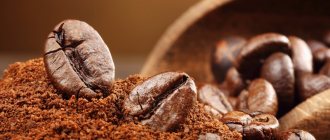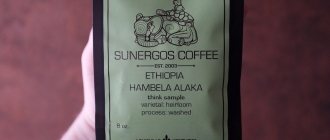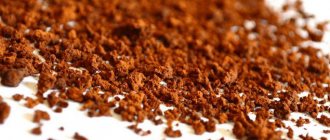Dark roast coffee
This roast is also called “espresso.” Dark roast coffee is intended for a geyser coffee maker, coffee machine or Turk. When brewed using these methods, the coffee is exposed to a quick and intense effect, and the ratio of coffee to water is approximately 1 to 2.
Dark roast coffee has less acidity, it is denser, with a high degree of caramelization of the grain. Therefore, by brewing it, for example, in a Turk, you will get a taste in a cup that is closest to the “classic” one. This will be a rich coffee with a dense body and a characteristic bitter chocolate aftertaste.
Depending on the type of coffee, you will also be able to taste subtle descriptors: dried fruits, berries, spices or other flavors indicated in the description of a particular variety.
Roasting Paulig coffee
Paulig roasting is an important step in coffee production. It depends on this whether the coffee will have a unique perfect taste or will be hopelessly spoiled in huge quantities.
During temperature treatment, chemical compounds and acids are formed and stabilized, which have a direct effect on taste and aroma, and also determine the strength and richness of the finished product. The sourness or bitterness of coffee depends on the degree of roasting, of which there can be several.
Depending on the selected degree of roasting, the exposure time ranges from 5-8 minutes at a temperature of 180-240°C.
Light roast coffee
This roasting is also called “filter roasting”. Light roast is suitable for brewing in a funnel (pour over), French press or just in a cup. The coffee-water ratio in this case is 1 to 14, and the effect on coffee during preparation is more delicate and prolonged.
Light roasted coffee retains more acids, and the degree of caramelization of the grain is weaker, which is why the taste reveals itself brighter and the body of the drink will be less dense. Therefore, when brewing using alternative methods, you will get distinct fruit and berry flavors and a lighter, but at the same time quite rich body.
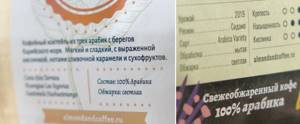
Among our light roast varieties there are both more acidic and sweeter, with virtually no sourness and a rich range of shades of nuts, spices and chocolate.
INFLUENCE OF ROASTING DEGREE ON COFFEE STRENGTH
The strength of coffee does not depend on its level of roasting. Darker roasting of beans only determines the lower content of guaranine (caffeine). For example, light roast coffee beans contain 1.37% guaranine, while dark roast coffee beans contain 1.31%. You yourself can adjust the strength of the coffee according to your desire or mood, the amount of water or the amount of raw materials.
The strength of coffee depends on factors such as:
- The ratio of water and coffee;
- Type of grinding of coffee beans;
- Preferred method of preparing the drink.
As a result, the same type of coffee, depending on the degree of influence of these factors, may have differences in strength.
Medium roast coffee gives a richer color with a bitter aftertaste. A medium roast is characterized by a “second click” sound. The coffee beans release essential oils and the sugar caramelizes.
Strong degree of roasting - the taste of coffee with it has a characteristic bitterness with a nutty-chocolate aftertaste. The finished product is saturated with natural aroma, and the caffeine scale is at a high level. The grains acquire a dark brown color. A coffee drink made from such raw materials will have not only a deeply rich taste, but also an aroma.
But the highest degree of roasting of beans is used quite rarely. This kind of roasting evaporates almost all the moisture contained in the grain, due to which their solid consistency becomes thinner. Coffee brewed from such beans will be strong, with a bright and distinctive taste. However, there are quite a lot of people who like this coffee; it “invigorates” well.
Types of coffee roasting
In different countries, coffee beans are roasted in their own way, which is why there is such a classification. The most well-known methods are:
- Viennese roasting is the softest, the grains are light brown in color;
- French - glossy, dark brown grains;
- Italian - gives the grains a rich dark brown color with oil protruding on the surface.
Interesting: residents of the southern regions of Russia prefer strong Italian roasting of coffee, while those living in the northern regions prefer a softer one - Viennese or French.
Less known:
- Scandinavian or cinnamon – very light and extremely soft roast;
- American – weak, but the coffee after it is richer and more aromatic;
- Cuban - roasting occurs at a temperature of 250°C, the coffee drink is rich, bitter, very strong. It is important to choose the right type of grain for it so that the raw material does not turn into coals.
Let’s combine the knowledge we have gained into a table and get acquainted with some more types of roasting coffee beans.
Main degrees of roasting
| DEGREE | NAME | COLOR, SURFACE | CHARACTERISTICS |
| Light | Cinnamon, New England, Light, Breakfast, Half-city | Light brown color. Dry surface. | Light richness of taste. Pronounced sourness. |
| Average | American, Medium Brown, City, Brown | Rich light brown color. Dry surface. | Light bittersweet notes on the palate. Light sourness, richer taste. |
| Medium-dark | Full City, Vienna, Velvet | Rich brown. Slightly oily surface. | More pronounced bittersweet notes in the taste. Even lighter sourness and richer taste. |
| Dark | Espresso, Italian, European/Continental | Dark brown color. Oily surface. | Pronounced bittersweet taste, minimal sourness. |
| Very dark | French, Dark French, Spanish | Very dark brown, almost black. Very oily surface. | Sharp sweet-bitter taste, lack of sourness. |
Cinnamon Roast
Approximate temperature 195 °C The lightest roast, the grains are light brown in color with a slight richness of taste, noticeably pronounced sourness and a subtle bready aroma. There is no oil on the surface.
Light or New England Roast
Approximate temperature 205 °C Light roast, in which the beans are light brown in color, is slightly darker than the cinnamon roast. The taste still has a pronounced sourness, but without bread notes. There is still no oil on the surface.
American Roast
Approximate temperature 210°C Medium light brown color. Immediately after the “first crack”. There is still no oil on the surface. This roast got its name because of its popularity in the eastern part of the United States. Often this roast (as well as cinnamon) is used during professional coffee tastings.
City Roast
Approximate temperature 220 °C Rich brown color with still dry surface. Roasting is popular in the western United States and also works well for coffee tastings.
Full City Roast
Approximate temperature 225 °C Rich brown color. Drops of oil begin to appear on the surface of the grains. The taste is dominated by caramel and chocolate notes. The beginning of the “second crack”.
Vienna Roast
Approximate temperature 230 °C Moderate dark brown color with a slightly oily surface. The appearance of bittersweet, caramel notes in the taste. The sourness fades to a minimum, giving way to richness. In the middle of the "second crack". This roast is sometimes used for espresso.
French Roast
Approximate temperature 240 °C Dark brown color, shiny oily surface. There is practically no sourness, burnt notes appear in the taste. At the end of the "second crack". Popular roast for espresso.
Italian Roast
Approximate temperature 245 °C Very dark brown color, grains coated with oil. Roasting is similar to French roasting, only with a more pronounced taste. Common roast for espresso.
Roasting degrees
The degree of roasting of coffee beans reveals the characteristic qualities of many types of coffee; the intensity of heat treatment affects the taste and aroma of the resulting drink. Different regions of the world have their own preferences.
Very lightly roasted coffee
Lightly roasted beans produce a weak drink with a fruity and sour taste. This degree of toasting is preferred by Americans.
Lightly toasted
Lightly roasted light brown grain retains an amazing aroma and reveals nuances of taste, making it a refreshing, invigorating morning drink. Light roasting is difficult to achieve on an industrial scale because it requires careful control of the process.

Medium toasted
The most versatile roasting option that enhances the quality of the product. The oily dark brown beans make a slightly bitter drink with notes of caramel and chocolate.

Deep frying
After this treatment, the grains become shiny, almost black. The coffee tastes bitter and tart. A high roasting temperature hides possible shortcomings of the coffee product.
The degrees and types of coffee roasting are different concepts. It is impossible to determine what degree or type of roasting is better; this is a purely individual matter. Even among tasters, the perception of taste is not the same, just like human preferences.
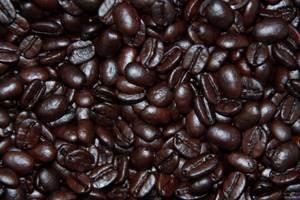
Degree of roasting of coffee beans
Over the centuries, different styles of coffee roasting have evolved. Depending on the origin of the beans and the place of roasting, such beans as American, Spanish, Greek, Viennese, Oriental, Italian, etc. arose.
These classic style names not only indicate the degree of roasting of the beans, but also indicate the origin of the coffee. For example, the characteristic name “Italian coffee” refers to a mixture of Arabica coffee from Colombia and Robusta coffee from Africa, roasted in Italian. The strange, at first glance, name “Mexican French” (Mexican freuch) belongs to Mexican coffee roasted in French.
They tried to eliminate the confusion that arose when recognizing roasting styles by establishing a special scale with numbers for the degree of roasting and an indication of the origin of the coffee beans. However, it turned out that this scale is not enough, since each taster has a different approach to the concepts of “highly” and “lightly” roasted coffee. It was agreed that beans roasted using the French, Italian, Spanish and Cuban methods were always dark in color and shiny. Light and medium roasted beans are always matte, brown, amber, light brown and chocolate in color.
Since the same beans can be roasted to produce completely different flavors of coffee, additional roasting characteristics have been introduced:
- Normal;
- Full;
- Regular;
- Perfect;
- Special;
- Strong;
- Standard;
- Deep, etc.
To attract buyers, large companies have introduced another term to designate the intermediate stages of frying. The result was a fairly long list of roasted beans from light to very dark. The origin of the grains does not matter.
There are several degrees of roasting of beans. Depending on the countries and coffee producing companies, they have different names and characteristics. Nevertheless, we can identify a number of the most common degrees of roasting that we most often encounter.
↑ up
Light roast coffee
Taste: clearly distinguishable sour tones.
To obtain it, roasting is used:
- New England Roast
; - Cinnamon roast
*.
* Cinnamon itself has nothing to do with roasting: only its color is used to indicate the style of lightly roasted coffee.
In this case, the surface of the grain acquires a light brown color. It becomes dry. Suitable for soft beans as it allows the subtle flavor and aroma to fully develop. Recommended for breakfast coffee because it goes well with milk.
↑ up
Medium roast coffee
Taste: stronger, richer, sweet and sour.
This is the usual degree of roasting; to obtain it, roasting is used:
- American roast
; - Regular roasting;
- Medium high roast;
- Medium roast.
The grain has a darkish color and a dry, oily surface. The result is coffee that can be drunk at any time of the day, with or without milk.
↑ up
Highly roasted coffee
Taste: less sour than medium roast coffee.
To obtain it, roasting is used:
- Roasting City
; - Full City Roasting
; - Viennese roast
**;
** The Viennese style of roasting is difficult to give an unambiguous description, since in Vienna there are several styles of roasting, all of them are united by the term “Viennese”; Full City style
(two thirds medium roast coffee) and
French
(one third deep roast coffee), light French, velvet roasting styles.
With this type of roasting, the beans are kept on the fire a little longer than with a medium roast. The grains are dark brown; faint traces of oiliness can be discerned on their surface. When brewed, the result is a dark drink.
↑ up
Highest degree of roasting
Taste: bitter and very expressive, slightly “scorched” and pleasant.
A fairly wide range of different roasting styles can be included in this roasted coffee category, including:
- French roast
; - Italian roast
; - Spanish roast
; - European roast;
- New Orleans Roast;
- Continental roast;
- Double frying
- Cuban roast, etc.
At this level of roasting, the beans are dark brown in color and have an oily surface, with the dark brown often fading to a black-brown, charred appearance. This coffee is drunk black, with cream, at lunch or in the afternoon, and it is called afternoon coffee.
↑ up
Roasting beans for espresso coffee
The grains are black, on the verge of charring.
This special category of roasted coffee includes Italian, Indian styles, which involve the highest degree of roasting. Their surface is shiny and oily. It is advisable to grind such beans very finely, which is usually done for espresso coffee.
↑ up



